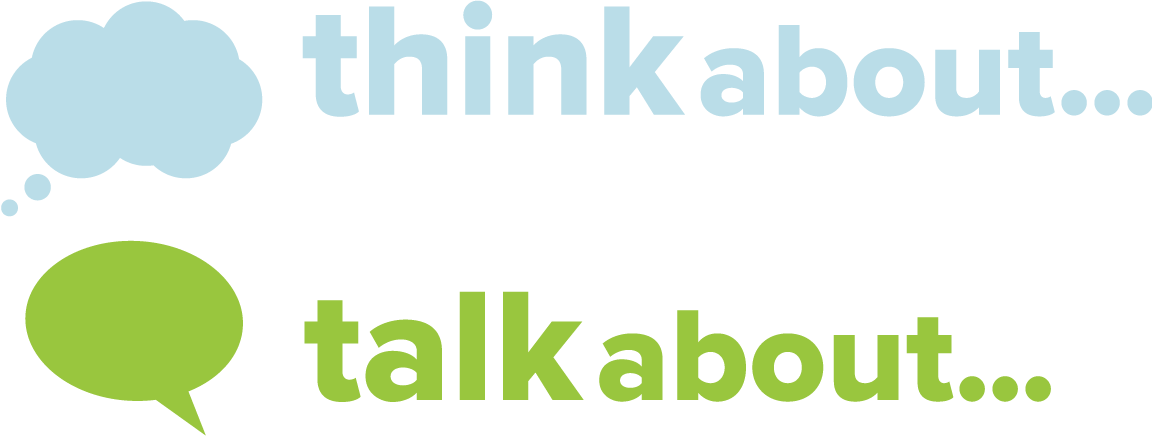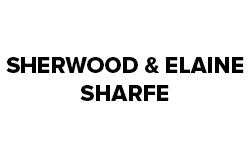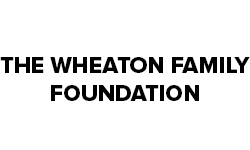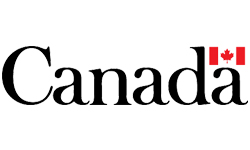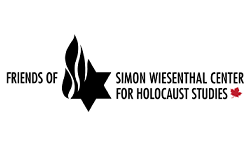Part B: Learning Plan
In this inquiry students will learn about:
- Community structure and organization and how society is organized to support them.
- How communities support people and fill their survival needs.
- The inter-relatedness of people to one another and their environment.
CITIZENSHIP INQUIRY
Curricular Outcomes
IN2.1 Determine the characteristics of the community.
Students will begin to understand the interdependency of people to communities and the structures that support this interdependence.
Questions are posted and discussed with students at the start of the exploration of study. These open-ended questions are continually revisited; encompass concepts that students will explore throughout the unit of study; form the evidence of understanding; and, frame the assessment at the end of the unit of study. Guiding questions are posed to support student thinking as they explore the answers to the larger overarching questions.
QUESTIONS TO GUIDE INQUIRY
Essential Questions – Guiding Questions:
- How do needs differ from wants?
- Do we need everything we have?
- De we need everything we want?
- How does meeting my needs impact myself, community, and place?
- What responsibilities do I have to my community/fellow man?
- What is a friend?/Who is a friend?
- What kind of friend am I?
- Would I choose myself as a friend?
- What responsibility do you have to balance personal needs with community needs?
- What responsibilities do I have to my environment?
- What stories do my actions tell about me?
- What is my relationship to the environment?
- How can symbols provide a sense of belonging and unity?
- Why are symbols so important to people? Causes? Groups? Countries?
- What are the community symbols that are important to me and why?
Vocabulary
- community
- organization
- infrastructure
- communication
- transportation
- natural resources
- industry
- economy
- environmental footprint
- community stewardship
CONNECT TO TOPIC AND SURFACE STUDENTS’ THINKING ABOUT …
This section introduces the concepts and helps teachers gain an understanding of the current thinking of the class. Present essential questions and allow students to think about and talk about. Student answers will give teachers a baseline or beginning understanding of the amount of specific and incidental teaching required to explore these outcomes. Vocabulary is introduced and noted here. This section frames the “We do” portion of the lesson where teachers guide the initial structure of the inquiry.
- Could you exist on your own without other people? Why or why not?
- What is a community?
- What makes a community a community? What are the characteristics of a community?
- How do communities organize themselves so that they can begin to serve the people who live in them?
- Can communities exist on their own? Why or why not?
- Do communities need friends?
- Do communities need to be looked after?
Chart student answers for later reflection.
Jigsaw Research and Study Process
Divide class into groups to find the answers to questions posed. Give each group a specific area to learn about and present to class. Each group must find out the information in the question posed below. Encourage students to present information learned in a variety of modes including speaking, writing, drama, multimedia, or other modes so that all students have an entrance point for demonstrating their learning and understanding.
DEVELOPING UNDERSTANDING
This section is the core of the lesson. It describes the main activity(ies) involved. In inquiry-based learning, the teacher facilitates the activities that lead to the understandings that student make of the essential questions. It is critical then, that students be allowed to raise questions and talk about issues that develop as they explore the learning activities.
Is the school a community?
Does the school support the community?
Identify:
- The structures of the school that allow the school to function.
- Who leads the school?
- Who keeps the school community clean and physically pleasant?
- Who supports the school?
- The reasons for the existence of the school.
- What needs does the school meet for students?
- For the larger community?
- What kinds of special events does the school community undertake?
- What kinds of needs are those activities fulfilling?
- Map/chart the organizational structure and activities of the school and the needs its existence fulfills for students and the larger community.
If the school is a community and supports the community then what are the characteristics of a community?
Have student groups develop answers to the questions above and give reasons for their thinking.
Begin to develop a community characteristics list.
- How are communities organized?
- Have students identify the various groups or communities to which students belong (e.g., cultural, recreational, faith, sports, arts).
- Talk about the structure of the group/community i.e. who leads the group, how is it organized/structured?
- Compare characteristics of other communities/groups to which students belong with those of the school community, identifying the similarities in meeting needs, achieving common purpose and organizational structure.
What are the similarities between the different groups to which students belong?
What are the differences?
- Have students develop summary statements that indicate how communities are organized.
- Have students create a concept web or map that shows how their community is supported.
APPLY AND EXTEND KNOWLEDGE
This section includes ideas to extend the inquiry and/or apply concepts explored. This section may also include additional reflective questions to promote student connection to the topic. Reflective questions encourage critical and creative thinking.
Students will develop an understanding of communities and the organizational structures that support them. They will begin to develop an understanding of the concept of interdependence.
Communities are made of people who have developed housing/building structures and organizations to support themselves as they live together. Have students brainstorm components of community i.e.
- People, buildings, village/town site/city divisions, services – safety, health, education, mercantile, transportation, etc.
What do people need to survive? How do communities help people survive?
What do communities need to survive? How do people help communities survive?
What responsibility do you have to look after your community?
- Chart student answers for reflection in the following inquiry.
- Choose a selection of communities – towns, cities, First Nations bands. Extend the scope of influence as far as students are able to understand. i.e. regionally, provincially, nationally.
- Assign each group of students one of the communities to research. Have students:
- Identify
- transportation and communication networks,
- educational and health care systems,
- culture, sport, and recreation infrastructure
- Tell how these networks and systems support people
- Create a list of the different groups within the community.
- map out their organizational (governance) structure
- identify the symbols that represent the group, and show how the symbol connects to the group/organization
- Identify the need the group/organization fulfills in the society or the contribution they make to the community.
- Compare the structures or groups that support people’s needs within the community i.e. food, housing, clothing, spiritual to the list of people’s needs.
- Are community needs being met?
- Identify needs of the local community that cannot be met independently or individually.
- Identify the ways that needs are supported outside of the community.
- Identify
What were the similarities in what the students found?
What were the differences? What are the reasons for the differences?
How do communities support the survival of people/citizens of their community?
How do students support their communities?
EVIDENCE OF LEARNING
This section suggests ways in which students may demonstrate their understanding. Ideally, these demonstrations will be done in authentic performance tasks. Each citizenship study may have its own smaller assessment piece or be compiled to support one larger performance task assessment. Assessment pieces vary, but should allow students to demonstrate their understanding in a variety of ways.
Overarching essential understandings
- How does my community support my needs?
- How does meeting my needs impact myself, community, place?
- What responsibility do you have to balance personal needs with the community’s needs?
- How can you support your community in (What responsibility do I have to my fellow man? Community? Environment?)
Students can choose any representation method to demonstrate:
- The interdependence within the local community.
- The ways in which individuals and groups contribute to the well-being of the school and/or local community.
In each case students should identify the community symbols that are connected to the groups identified and tell why they are important to the student.
STUDENT CITIZENSHIP JOURNAL OPPORTUNITIES
Students are keeping a Citizenship Journal to reflect upon their developing views of citizenship. This section provides prompts for student journals. Students are invited to choose one that interests them or propose their own. Students can also respond to any of the essential questions.
Students are encouraged to respond using a variety of genres.
- How can my community be made stronger?
- How can I meet my community’s needs? What is my responsibility to support my community?
- What kind of a community member am I?
Learning Plan
In this inquiry students will:
- explore their connection to the community and other community members.
- understand that they can contribute to making changes in their community and beyond with respect to environmental, social, and economic issues.
INQUIRY
Students will begin to understand the relationship between how the community serves the individual and how individuals contribute to the community by exploring the connection between the community and the environment.
Curricular Outcomes
RW2.1
- Describe ways in which the local community meets needs and wants of its members.
Students will explore their connection to the community and other community members.
DR2.2
- Analyze the influence of the natural environment on the local community.
Students will understand how the economic strength of the community is connected to the environment.
RW2.3
- Contribute to initiating and guiding change in local and global communities regarding environmental, social, and economic sustainability.
Students will understand that they can contribute to making changes in their community and beyond with respect to environmental, social, and economic issues.
CONNECT TO TOPIC AND SURFACE STUDENTS’ THINKING ABOUT …
This section introduces the concepts and helps teachers gain an understanding of the current thinking of the class. Present essential questions and allow students to think about and talk about. Student answers will give teachers a baseline or beginning understanding of the amount of specific and incidental teaching required to explore these outcomes. Vocabulary is introduced and noted here. This section frames the “We do” portion of the lesson where teachers guide the initial structure of the inquiry.
What responsibility do I have to look after, support my fellow man?
- Community?
- Environment?
What does my behaviour say about my responsibility to my community?
- How does meeting my needs impact myself, community, place?
- How far reaching are the effects of my lifestyle?
- What responsibility do you have to balance personal needs with the community’s needs?
- Do we have the right to meet all our needs at the expense of the environment, other community’s needs?
How can I begin to make things better for my fellow man, community, and environment?
- What responsibility do you have to balance personal needs with the community’s needs?
- What could be an action plan to make changes?
Chart student answers. What ideas do students have about their needs and wanting to meet their needs? Are there similarities in their thinking? Examine student action plans looking for similarities and differences. Will students commit to making a difference and begin to move forward on their action plan? What supports are needed?
How does my community, town, band, city look after its residents? How does it support itself economically? Looking back on the previous inquiry, what were the services that people need in order to be able to live together in this community?
DEVELOPING UNDERSTANDING
This section is the core of the lesson. It describes the main activity(ies) involved. In inquiry-based learning, the teacher facilitates the activities that lead to the understandings that student make of the essential questions. It is critical then, that students be allowed to raise questions and talk about issues that develop as they explore the learning activities.
With students develop lists of the natural resources and economic development in and around the community.
How does the community/band/town/city provide for itself? Make money? How are those economic developments connected to the environment / place?
i.e. farmland, mining, businesses – gaming, entertainment, industry – manufacturing
Map those economic developments and chart for students so that they can begin to see the interconnectedness between economic development.
Divide students into groups and using the Jigsaw Research process give each student group one of the items from the list.
- Develop a concept map showing how each of the identified economic development on the list provides employment for community members.
- Identify natural features of the local community i.e. landforms, climate, vegetation, waterways. Have student groups show how those natural features support the assigned economic development. What is the connection between the natural feature and the economic development?
- How would the community and the assigned economic development/jobs be affected without those natural features and natural resources?
- How and what does the community do to conserve and/or restore natural resources?
- Identify processes, rules, regulations, and groups of people who have responsibility for protecting the environment/resources
- within the community,
- outside of the community.
What is the impact of meeting your needs on self, community, and place? What is your responsibility as a citizen to protect the natural resources?
Have student groups:
- Identify ways that technology has been and is used to enable people to adapt to the natural environment
- building technology,
- clothing,
- industrial equipment,
- personal care.
What could students do as a classroom to look after the environment?
What could students do personally to look after the environment?
What changes could they make in their lifestyle to look after the environment?
APPLY AND EXTEND KNOWLEDGE
This section includes ideas to extend the inquiry and/or apply concepts explored. This section may also include additional reflective questions to promote student connection to the topic. Reflective questions encourage critical and creative thinking.
How would we rate the environmental behaviours and choices of this class?
What does our behaviour say about the kind of Citizens connected to Self, Community, and Place that we are?
- Students will understand the processes for making changes.
- Identify people or groups in the community/province who are interested in supporting the sustainability of the environment.
- Show how those individuals or groups in the communities make change and support the sustainability of the environment.
- Students will think about how their individual consumer choices may affect people elsewhere in the world (e.g., child labour, enslavement, sweat shops, consumption of scarce resources, prosperity through employment).
- Extend the previously developed classroom action plan to consider personal and collective action for harmonizing personal lifestyles with collective needs regarding social, environmental, and economic sustainability on a global level.
- Give the history of a national, provincial, community symbol or ceremony and explain the symbolic nature of the symbol or ceremony.
EVIDENCE OF LEARNING
This section suggests ways in which students may demonstrate their understanding. Ideal demonstrations will be in authentic performance tasks. Each citizenship study may have its own smaller assessment piece or be compiled to support one larger performance task assessment. Assessment pieces vary, but should allow students to demonstrate their understanding in a variety of ways.
How does meeting my needs impact myself, community, place?
How far reaching are the effects of my lifestyle?
What responsibility do you have to balance personal needs with the community’s needs?
How can I begin to make things better for my fellow man, community, and environment?
What responsibility do I have to my fellow man? Community? Environment?
Have student groups choose one of the options below to demonstrate understanding.
- Identify one example of recycling that occurs in school or community. Describe and offer alternatives or improvements.
- Interview a member of one of community groups, identifying purpose of group, roll the group plays in community.
- Create a commercial describing a community, regional, or global issue and offer a plausible solution.
- Identify how they could make better choices and what the impact of those choices would be.
STUDENT CITIZENSHIP JOURNAL OPPORTUNITIES
Students are keeping a Citizenship Journal to reflect upon their developing views of citizenship. This section provides prompts for student journals. Students are invited to choose one that interests them.
- What responsibility do I have to my fellow man?
- What responsibility do I have to my community?
- What responsibility do I have to my environment?
- What kind of a “footprint” am I leaving on the environment?
- What choices can I make now to make a positive difference in the future?
© 2024 Concentus Citizenship Education Foundation Inc. All Rights Reserved.

